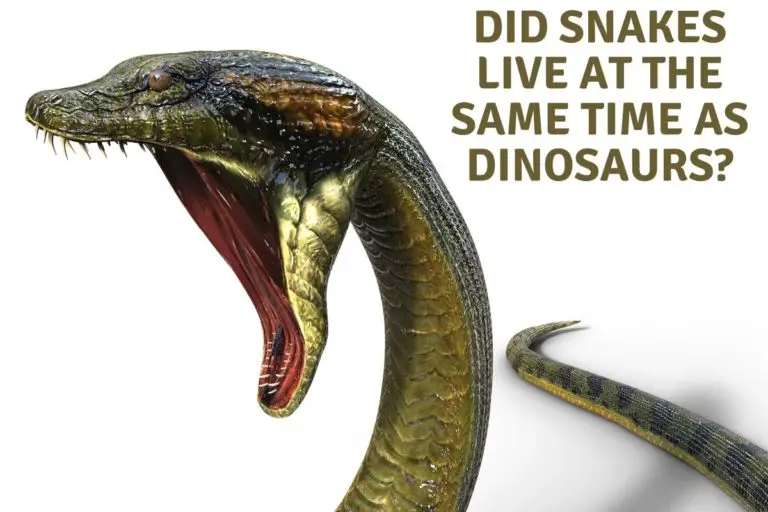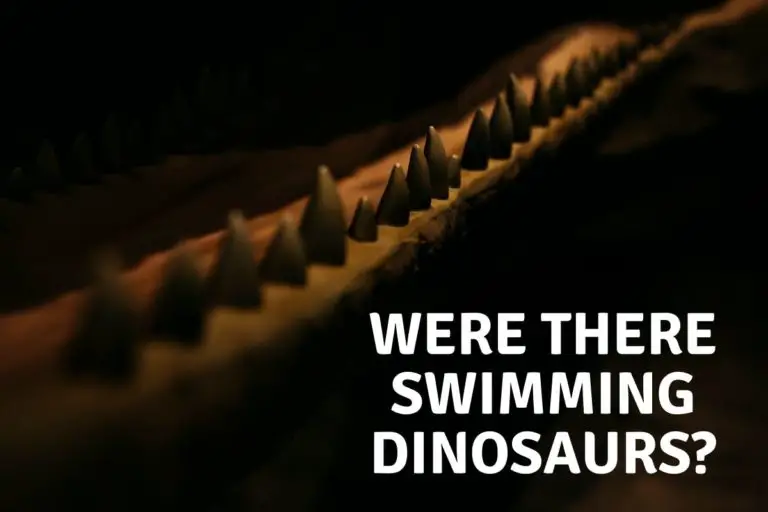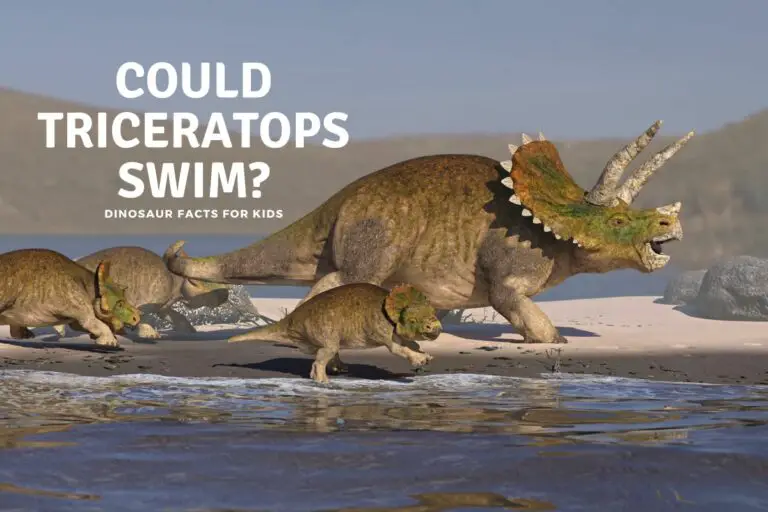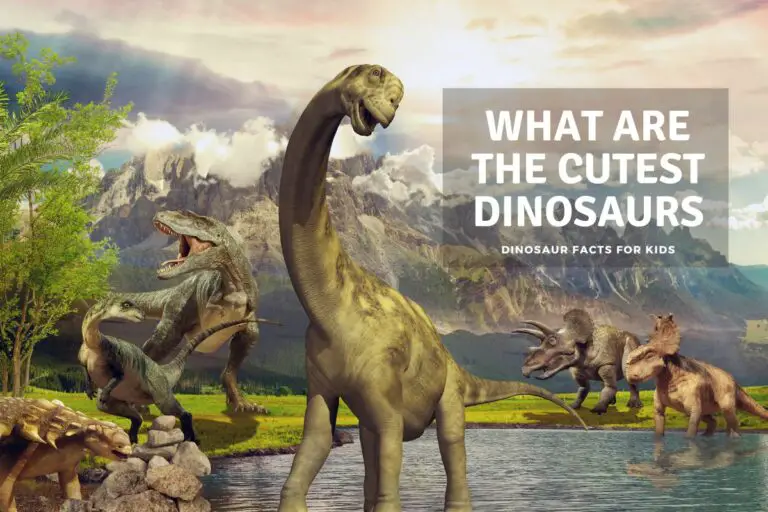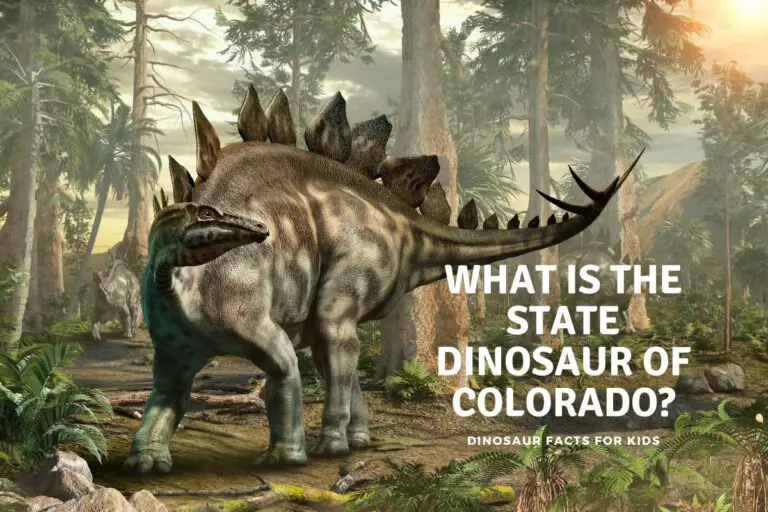Could Velociraptors Climb Trees?
While it may be hard to think of a T-Rex or even more unlikely a Triceratops or Brachiosaurus nesting in the branches of tree it is not that far fetched to think of smaller dinosaurs making the most of all their environment including trees. We take a look if a Dinosaur the size of Velociraptor could climb here today
Velociraptors possessed some anatomical features that suggest potential climbing ability, most current research indicates they were primarily ground-dwellers. While they may have possessed some ability to climb it would have not been a first choice of activity for them.
So while the Velociraptor was most likely a ground based dinosaur, it was not beyond the realms of possibility to think of it possessing some climbing ability when it needed.
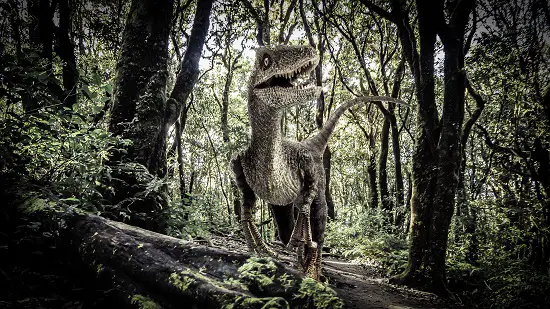
A Quick Overview of The Velociraptor
The Velociraptor, whose name means “swift seizer”, has become one of the most iconic dinosaurs, largely due to its appearance in popular culture. Native to what is now Mongolia and China, these predators lived during the Late Cretaceous period, around 75 to 71 million years ago.
Despite in movies being shown as human-sized, Velociraptors were actually much smaller. They averaged about 6.8 feet (2 meters) in length and stood roughly 1.6 feet (0.5 meters) tall at the hip, weighing between 15 to 33 pounds (7 to 15 kilograms).
Covered in feathers, with a bird-like appearance, they bore a closer resemblance to birds than the lizard-like creatures often depicted on screen.
Their slender bodies were built for speed and agility, crucial attributes for a predator. One of their most distinguishing features is the sickle-shaped claw on the second toe of each foot, which they likely used to tackle and disembowel prey and possibly, as stated by some recent theories possibly climbing as well.
But let’s look at that in more detail below.
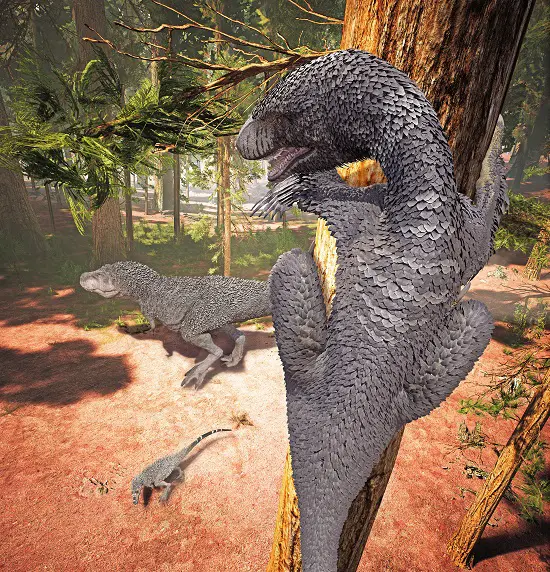
Could the Velociraptor Climb?
Velociraptors were smaller and more agile than many other predatory dinosaurs of their time. This lightness, combined with certain anatomical features, hints at their potential climbing ability.
Firstly, their sharp, curved claws on both hands and feet are crucial clues. These claws, especially the pronounced sickle-shaped one on their second toe, might have been suitable for gripping and climbing.
In fact What the study in anatomical record showed was was that the hand claws as well as the more famous feet claws of the velociraptor would have been well suited for grasping and anchoring onto surfaces.
While most famously recognized as a weapon, in a tree-climbing context, it could have provided a good grip on bark and branches.
Secondly, Velociraptors had long, slender limbs. In today’s world, such limb structures are commonly seen in arboreal (tree living) animals who frequently navigate and live in tree canopies.
Their tail, stiffened by elongated bony structures called ossified tendons, could have provided balance, acting like a counterbalance while moving vertically.
Lastly, their light body weight—estimated around 15 kilograms—would have made it easier for them to move upwards without snapping tree branches, as we mentioned size certainly matters when living in a tree!
However, while these physical traits suggest the potential for tree-climbing, they don’t provide conclusive evidence. Anatomy alone can’t confirm behavior, but it can certainly guide our theories.
Fossil Evidence and Clues
The fossil record, while invaluable, often offers fragmented stories. There hasn’t been direct evidence, such as trace fossils showing Velociraptors in trees. However, indirect clues provide some insights.
For instance, some Velociraptor fossils have been found in what seems to be ancient woodland environments. Their proximity to such habitats might suggest tree-climbing or at least some interaction with trees.
Although the vast majority of velociraptor fossils are found in much more arid environments, so this is certainly not conclusive proof.
With the hand claws in particular being able to grip it shows the movement of a creature skilled in grasping which although more likely used in hunting could have been adapted to climbing when needed or beneficial.
However, it’s essential to approach these clues with caution. Fossil evidence can and often is open to various interpretations.
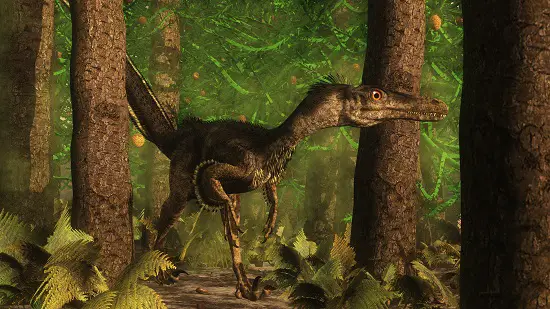
Comparison to Modern-Day Climbing Animals
While looking at long extinct animal, including dinosaur, behavior is the very definition of conjecture and guesswork it does have a basis in science. One of the ways of research is to compare animals alive today with similar traits and then see if their behavior could be adapted to a dinosaur.
Birds, being the closest living relatives of dinosaurs, are often studied for this purpose.
Many bird species, from the woodpecker to the tree-dwelling hawk, exhibit tree-climbing and perching behaviors, although there are of course examples of ground dwelling birds like ostriches and Emu as well.
However the way certain birds utilize their talons to grip and navigate branches could hint at how Velociraptors might have moved through trees.
Also the anatomy of tree-climbing reptiles, such as monitor lizards, also bear a few resemblances to Velociraptors, particularly in limb structure and claw design.
Yet, it’s important to remember that Velociraptors, while sharing certain traits with these animals, are unique.
Drawing parallels can inform theories but not necessarily confirm them and while the consensus may be leaning towards velociraptors having some climbing ability the absolute proof is not there yet and is not 100% agreed on as we discuss below.
There are also scientists
Arguments Against Velociraptors Climbing Trees
Although not perhaps as numerous as the arguments for climbing there are strong arguments in the scientific community against the tree-climbing theory for Velociraptors. One point is their size.
While not massive in size, Velociraptors were bigger than most modern tree-climbing birds and reptiles, potentially making tree-climbing an awkward endeavor.
The sickle-shaped claw, often cited as evidence for climbing, is also controversial. Some paleontologists argue that this claw’s purpose was likely for hunting and grappling with prey rather than gripping tree bark.
While Velociraptors had long limbs, they lacked certain adaptations seen in contemporary climbers. For instance, they didn’t have the opposable digits, like some primates, essential for grasping branches.
The environments where most Velociraptor fossils were found also provide some hints. Many were open landscapes, not dense forests, suggesting their primary hunting grounds might not have been tree-dense areas.
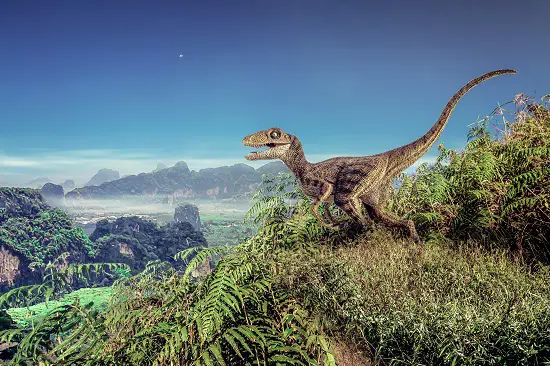
So did Velociraptors Climb?
Based on current evidence and research, the idea of Velociraptors climbing trees remains unknown
While they had some physical attributes that could support climbing behaviors, there’s no conclusive evidence confirming this, but for a lot of dinosaur behaviours there is not conclusive proof.
Many paleontologists believe that, like modern-day birds of prey, Velociraptors could have used their agile bodies and sharp claws more for hunting on the ground rather than in trees, but while perhaps not being used frequently that they would have had the ability to use those claws to climb when needed.
So while not living in trees, it would have likely possessed some ability to climb them if needed.
Conclusion
The current consensus leans towards Velociraptors being primarily ground-dwelling predators, however the ability to turn those hunting tools into climbing tools should not be discounted.
As with many aspects of paleontology, the ever-evolving nature of research and discoveries keeps the door open for future discoveries.
References
- https://www.smithsonianmag.com/science-nature/did-raptor-killing-claws-evolve-for-climbing-53458372/
- https://www.newscientist.com/article/mg20327254-100-velociraptors-killing-claws-were-for-climbing.
- https://www.cnet.com/science/dinosaur-with-wicked-scythe-like-claws-might-have-climbed-trees-like-a-leopard/
- https://blog.everythingdinosaur.com/blog/_archives/2009/09/11/4318363.html
Hi, I am Roy Ford a General Studies and English Teacher who has taught all over the world. What started as a fossil collection became a great way to teach, motivate and inspire students of all ages and all over the world about dinosaurs and from that and children’s love of dinosaurs came the site dinosaur facts for kids, a resource for all ages.

